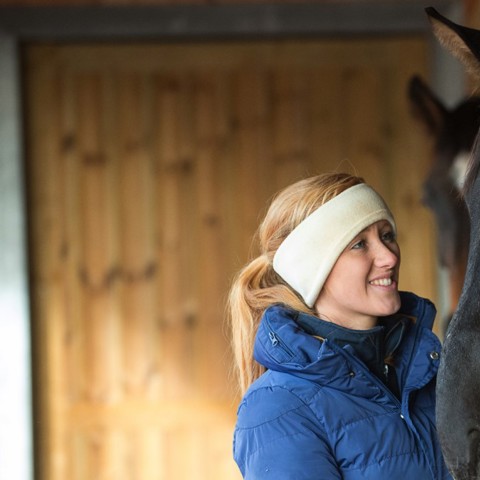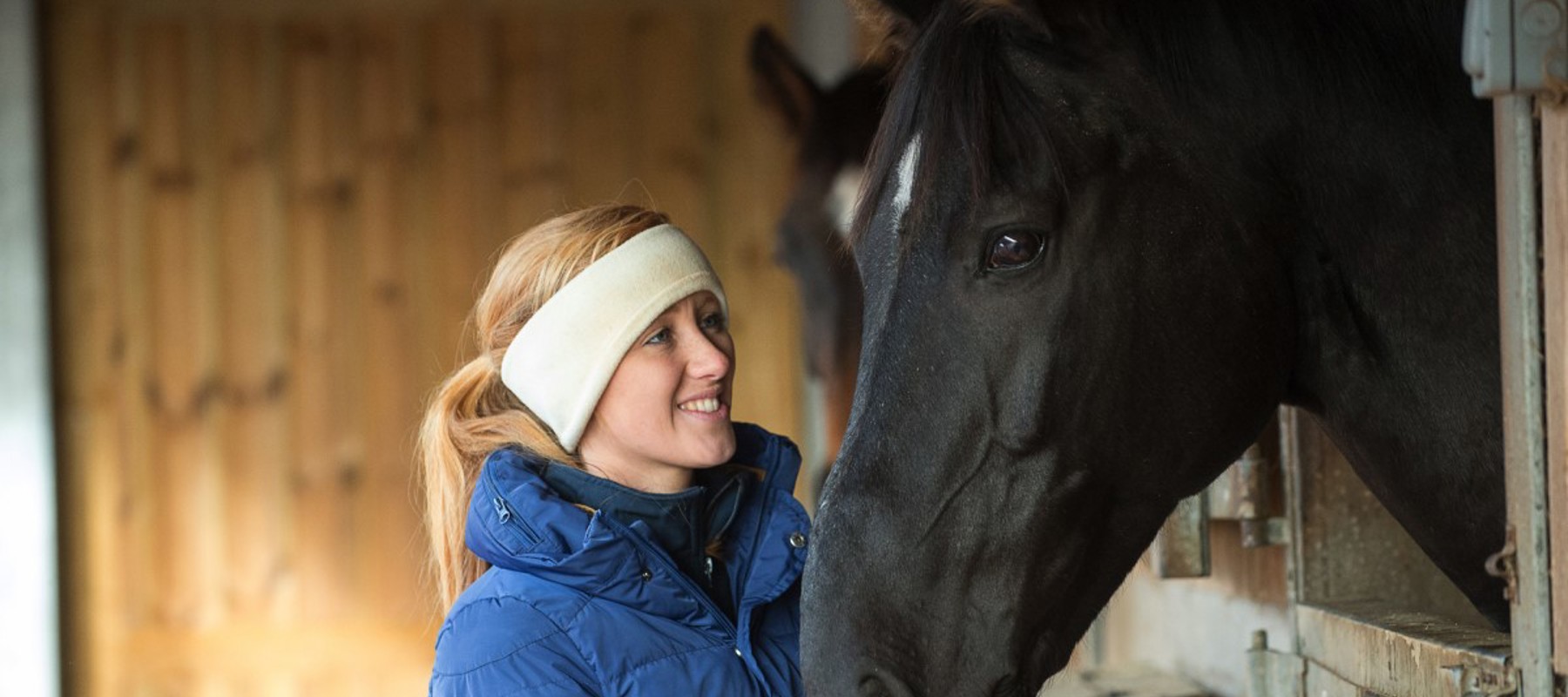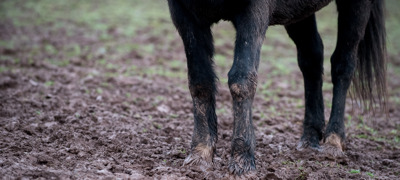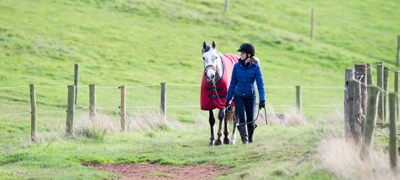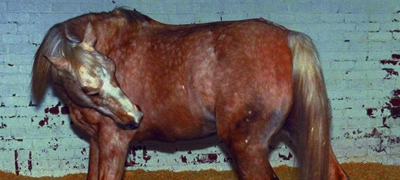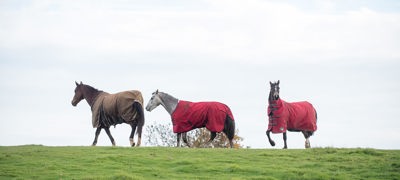Seasonal changes may mean your horse requires extra care and attention to remain not only physically healthy, but mentally stimulated to meet their behavioural needs.
Feeding - forage
Forage should form the basis of any horse’s diet as they’ve evolved to chew for up to 18 hours a day. It’s important to provide enough forage to help satisfy their behavioural needs, especially during winter when grass may not be readily available or turnout time is restricted1. Forage also helps to keep the horse warm acting as an in-built heating system by creating heat as it breaks down the fibre in the digestive system2.
Feeding in the field
You may need to provide additional forage for horses living out, depending on how much grass is available. When putting extra forage in the field, make sure there are more piles of hay than there are horses to help avoid conflict. Try to place forage away from troughs and gateways to make sure that the ground in these areas doesn’t get disturbed more than necessary.
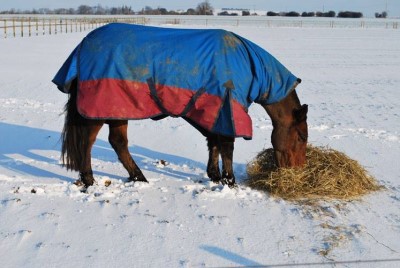
Feeding – does your horse need more than forage alone?
Many leisure horses do perfectly well on a forage-based diet, but it’s difficult to know exactly what vitamins, minerals and proteins they’re receiving. Therefore, it’s recommended to feed a balancer or vitamin and mineral supplement daily to make sure your horse is getting exactly what they need.
There are times when additional bucket feeds would be beneficial, for example for elderly horses who struggle to chew forage or those who drop weight during winter. Discuss with a nutritionist whether your horse would benefit from additional bucket feeds to help avoid overfeeding and save money by not buying unnecessary feed.
If concentrate feeds are needed, give them little and often so they can start to be broken down effectively by the stomach. As the stomach is relatively small, if concentrates are fed in large amounts, the feed will pass unprocessed through to the large intestine which can increase the risk of colic and other health issues.
Using a weigh tape, alongside fat scoring every two weeks, will help you to monitor your horse’s weight. Weigh tapes can vary in accuracy and may not be 100% reliable but they’re a good tool to help monitor if your horse is maintaining, losing or gaining weight. If you have access to a weighbridge, this will provide an accurate weight for your horse. Many vet practices, feed companies and the BHS offer owners and carers the opportunity to weigh their horses by bringing a weighbridge to the yard.
This way you can keep a close eye on any changes and adjust feeding programmes if needed.
Rugging
It can be really tempting to rug horses to keep them cosy especially when we feel the cold ourselves. However, horses will naturally grow a thick winter coat, so it’s important to assess whether rugging is necessary. If left un-rugged, try not to overgroom horses as this can strip the coat of natural oils which help with waterproofing. It’s important to remove any mud from areas where tack will be applied to prevent rubbing.
Keeping hydrated
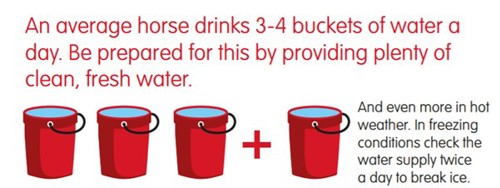
Water plays an important role in hydration and digestion1. If your horse doesn’t have access to enough water, is unable to drink as the supply has frozen or doesn’t consume enough water, it can affect how food passes along the gut, increasing the risk of impaction colic2.
Filling containers with water, so you have an emergency supply if the taps freeze is a great idea to make sure you can supply clean, fresh water. If your horse is stabled, adding some warm water into their buckets can prevent the water from freezing overnight, and may encourage a horse to drink if they don’t like the colder water. If your stable has an automatic water drinker it’s important to check that the pipes are well insulated to stop them from freezing – alternatively provide a bucket of water also just in case.
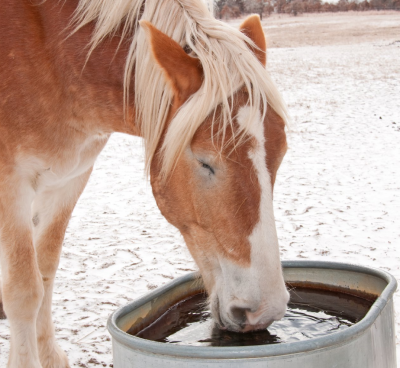
Winter ailments
Winter can increase the risk of your horse developing certain conditions, especially due to wet and muddy environments. Common winter ailments include mud fever and rain scald.
Changes to routine
Turning horses out all summer and then stabling them during the winter is common practice at many yards. This adjustment in routine represents a significant change in the horse’s diet and management, so should be completed gradually over 10-14 days to help reduce the risk of colic.
With fewer daylight hours and poor weather to contend with, it can often be a challenge to maintain your horse’s fitness and some owners decide to give their horses a rest period during this time or ride significantly less. In these circumstances, it’s vital that care is taken during this process.
Due to the possibility of spending longer periods stabled - providing extra enrichment in their stable can also help to meet their behavioural needs.
Pasture management
Wet weather often results in fields becoming poached and muddy but there are steps you can take to help manage the mud. The amount of turnout time may need to be restricted to prevent excessive poaching and reduce the risk of winter ailments developing. Providing drainage in areas of the field which are used often such as around water troughs or gateways can help to reduce the damage.
When out at grass, horses will need access to shelter, either natural such as thick hedges or tree lines, or a man-made field shelter2. Even if you think your horse doesn’t use it, on a cold, windy day they’re likely to seek a wind-break3,4. If natural shelter is accessible in your pasture, it’s important to make sure this isn’t poisonous to your horse and consider any trees that lose their leaves during winter, making them inadequate.
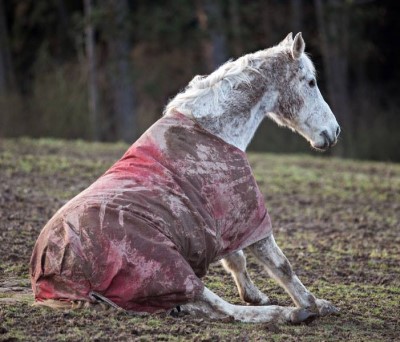
Exercising your horse in winter
If turnout time is restricted, this can potentially have a detrimental effect on the horse’s physical and mental health and increase the likelihood of stereotypical behaviours occurring.
By stabling horses for long periods of time we reduce their ability to express natural behaviours such as foraging, free exercise and mutual grooming. When we restrict the movement that our horses are having it can cause stress and anxiety. Getting your horse out of their box can include hand walking, lungeing, riding or putting them on the walker. All are great ways of providing stimulation outside of the stable.
Ice and frost can cause a hazard around the yard. Make sure to grit concrete areas to prevent you and your horse from slipping. Don’t ride out in slippery conditions or when visibility is poor. Choose exercise based on your horse’s temperament and weather conditions.
If you keep your horse in work during the winter months, it’s important to monitor how hot they are getting. A thick winter coat may cause excess sweating4 resulting in chills and sores where sweat isn’t able to be removed from the coat. Clipping is a good idea if your horse is in moderate exercise to relieve your horse from becoming too hot5 – reducing the cooling off time. If clipped, you may consider using an exercise sheet to keep your horse’s back warm during exercise - depending on the individual and type of clip.
References
chevron-down
chevron-up
- Hoopes, K. (2018) Caring for Horses in Cold Weather.
- Frape, D. (2013) Equine Nutrition and Feeding.
- JØrgensen, G. et al. (2015) Preference for shelter and additional heat in horses exposed to Nordic winter conditions. Equine Veterinary Journal. 720–726.
- Morgan, K. (2002) The effect of coat clipping on thermoregulation during intense exercise in trotters. Equine Veterinary Journal. 34. 564-567.
- Rice, J. (2022) Winter Care for Horses.PetMD
Get in touch - we're here to help
The Horse Care and Welfare Team are here to help and can offer you further advice with any questions you may have. Contact us on 02476 840517* or email welfare@bhs.org.uk – You can also get in touch with us via our social media channels.
Opening times are 8:35am -5pm from Monday –Thursday and 8:35am -3pm on Friday.
*Calls may be recorded for monitoring purposes

